Examples of Primary Storage Devices
Published: 8 Mar 2025
When we use computers, we don’t always think about how they store important information. But did you know your computer has special devices that help it save and find data quickly? Let’s learn about 10 examples of primary storage devices that make all of this possible.

10 Examples of Primary Storage Devices
A computer has many primary storage devices. These devices store temporary data that the computer needs quickly. They help the computer run programs and keep active data. Without them, the computer becomes slow and inefficient.
Here are 10 examples of primary storage devices:
- RAM (Random Access Memory)
- ROM (Read-Only Memory)
- Cache Memory
- Registers
- CPU Internal Memory
- DRAM (Dynamic RAM)
- SRAM (Static RAM)
- Flash Memory
- EEPROM
- NVRAM
RAM
RAM helps the computer store data temporarily. It keeps the information that the CPU needs. More RAM allows the computer to run programs smoothly. Without RAM, the computer slows down and struggles to work.
Key Features:
- RAM stores active data for quick use.
- It loses all data when the computer turns off.
- More RAM helps the computer run multiple programs at once.
- You can find RAM in computers, phones, and tablets.
- RAM improves gaming, browsing, and multitasking.

ROM
ROM stores important data that helps the computer start. It keeps information safe even when the power is off. Computers and other devices use ROM to boot up properly.
Key Features:
- ROM contains instructions for starting the computer.
- It does not lose data when power is off.
- The data in the ROM cannot be changed easily.
- You can find ROM in computers, smartphones, and game consoles.
- It helps the system work correctly.
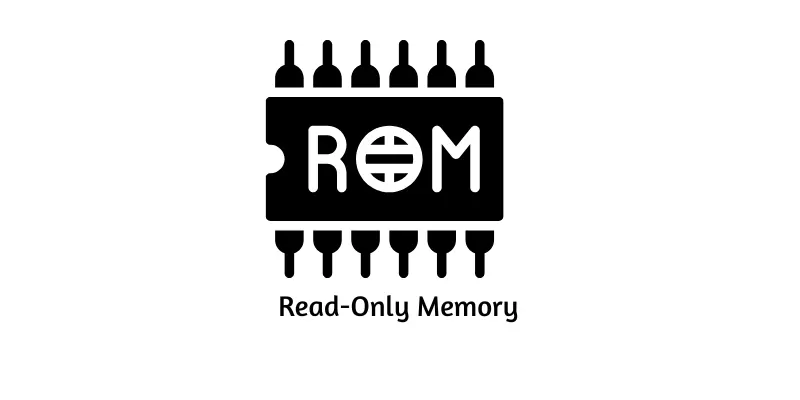
Cache Memory
Cache memory stores frequently used data for quick access. It is smaller and faster than RAM. The CPU uses cache memory to speed up tasks.
Key Features:
- Cache memory works faster than RAM.
- It stores frequently used data to speed up processing.
- The CPU can access cache memory quickly.
- It has a smaller storage size than RAM.
- Cache memory helps reduce processing delays.
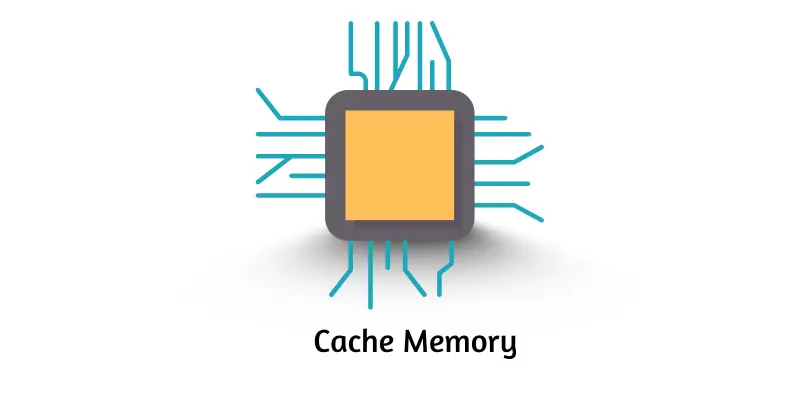
Registers
Registers are small memory units inside the CPU. They store data that the CPU needs immediately, helping the CPU work faster.
Key Features:
- Registers hold data for immediate CPU use.
- They work faster than RAM.
- Different registers store different types of data.
- They help process instructions quickly.
- Registers improve the computer’s speed.
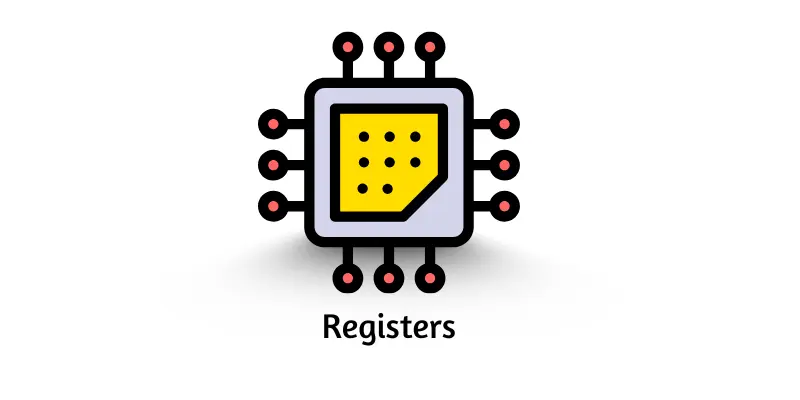
CPU Internal Memory
CPU internal memory stores instructions for quick access. It is built inside the CPU to improve speed. This memory helps the CPU perform tasks efficiently.
Key Features:
- CPU memory stores instructions needed for tasks.
- It works faster than RAM.
- It loses all data when the computer turns off.
- It is located inside the CPU.
- It improves processing speed.
DRAM (Dynamic RAM)
DRAM temporarily stores data while the computer is on. It refreshes its data constantly to keep information. Computers, smartphones, and gaming devices use DRAM.
Key Features:
- DRAM needs regular refreshing to store data.
- It loses all data when power is off.
- DRAM is slower than some other memory types.
- It is cheaper than faster memory types.
- Many devices use DRAM for temporary storage.
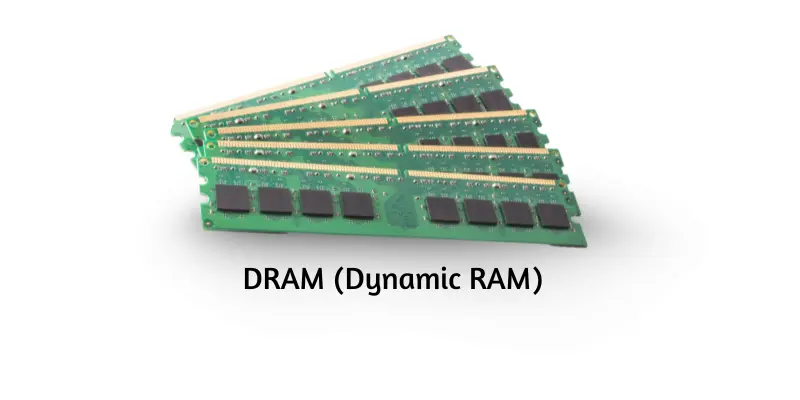
SRAM (Static RAM)
SRAM is a fast memory type. It stores data as long as power is on. Computers use SRAM for quick processing.
Key Features:
- SRAM provides fast data access.
- It does not need refreshing like DRAM.
- It uses transistors to store data.
- It loses data when the power is off.
- Many computers use SRAM in cache memory.
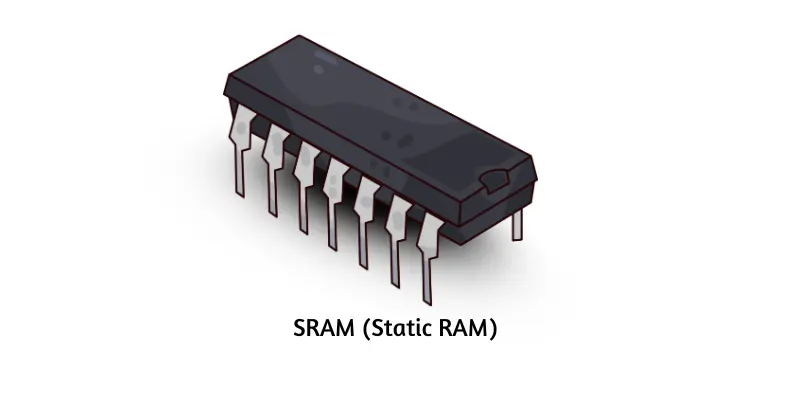
Flash Memory
Flash memory stores data permanently. It keeps information even when the power is off. Many devices, like USB drives and SSDs, use flash memory.
Key Features:
- It saves data without power.
- It provides quick access to stored information.
- You can find it in USB drives, SSDs, and memory cards.
- It is small and easy to carry.
- It is more reliable than some other storage types.

EEPROM
EEPROM stores data even when the power is off. It is used in primary storage for storing firmware. Many computers and printers use EEPROM.
Key Features:
- EEPROM keeps data even without power.
- It stores system instructions.
- It retrieves stored data quickly.
- It helps devices start correctly.
- EEPROM can be found in many electronic devices.
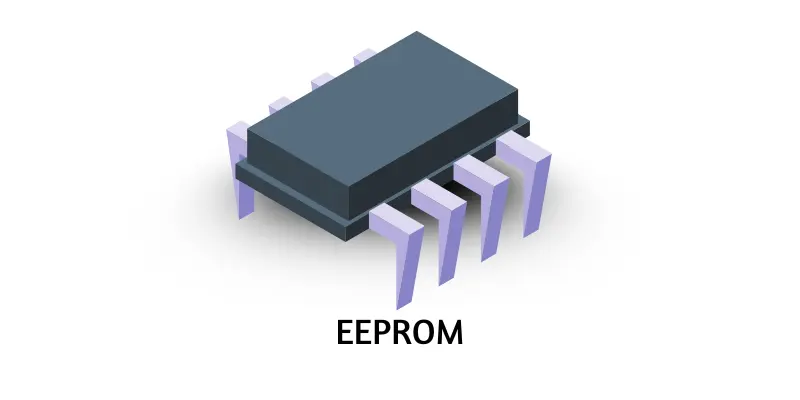
NVRAM
NVRAM stores data permanently, keeping important system data safe. It can also be part of a primary storage solution.
Key Features:
- NVRAM keeps data without power.
- It provides quick data access.
- Printers and routers use NVRAM.
- It stores critical system information.
- It helps devices run smoothly.
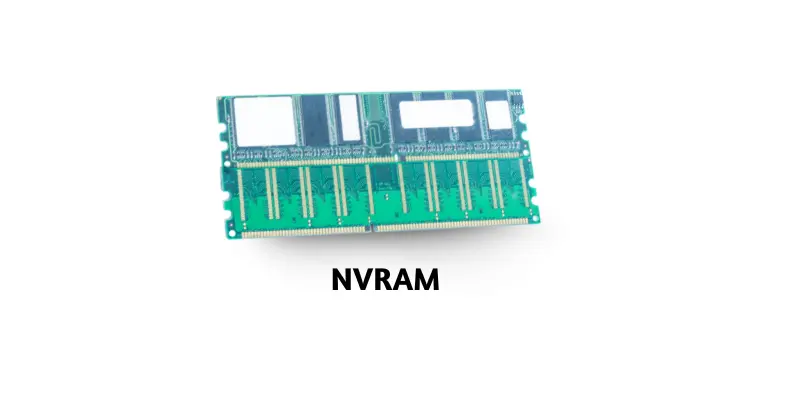
Conclusion
In this article, we’ve covered 10 examples of primary storage devices. These devices help computers work faster and store important data. I recommend choosing the right storage for your needs. The right device will improve your computer’s speed and performance. If you want to learn more, keep exploring and ask for help!
FAQs about 10 Examples of Primary Storage Devices
You can find some easy-to-understand answers here.
How does cache memory help my computer?
Cache memory stores data that the computer uses frequently for quick access. It helps your computer run faster by reducing the time needed to access data from slower storage. Cache memory is very small but very fast.
What are the different types of primary storage?
The key types of primary storage include RAM, ROM, cache memory, and registers. Each of these has a unique function that helps your computer operate smoothly. Together, they ensure fast access to crucial data, improving overall performance.
Can I upgrade my primary storage?
Yes, you can upgrade your primary storage, such as adding more RAM or replacing your storage device with a faster one. This can help your computer run more efficiently and faster. Just make sure to choose the right type of storage for your computer.
What are registers in a computer?
Registers are small, fast memory units in the CPU that store data needed immediately. They help process information quickly by holding temporary instructions and data, and they play a key role in speeding up computer operations.
What is SRAM, and why is it faster than DRAM?
SRAM stores data using transistors, so it doesn’t need refreshing like DRAM. This makes it much faster but also more expensive. It is often used in cache memory for quick data access.
How is RAM different from ROM?
Here’s the difference between RAM and ROM
RAM:
- RAM is short-term memory.
- It holds data needed for running programs.
- Data in RAM is lost when the computer is switched off.
ROM:
- ROM is long-term memory.
- It stores critical instructions like the boot-up process.
- Data in the ROM stays intact even when the computer is powered off.

- Be Respectful
- Stay Relevant
- Stay Positive
- True Feedback
- Encourage Discussion
- Avoid Spamming
- No Fake News
- Don't Copy-Paste
- No Personal Attacks

- Be Respectful
- Stay Relevant
- Stay Positive
- True Feedback
- Encourage Discussion
- Avoid Spamming
- No Fake News
- Don't Copy-Paste
- No Personal Attacks
